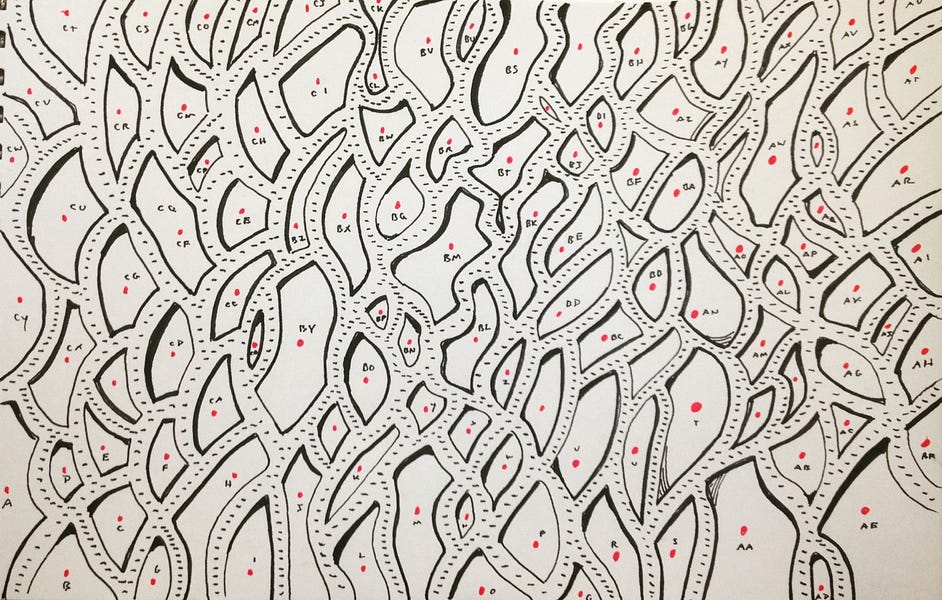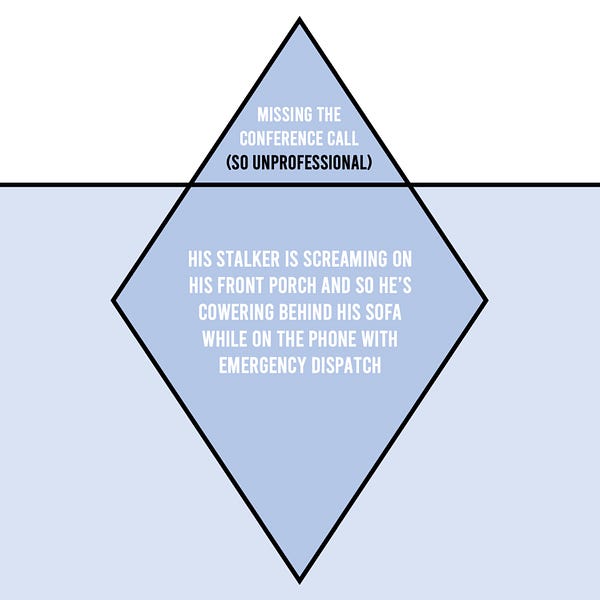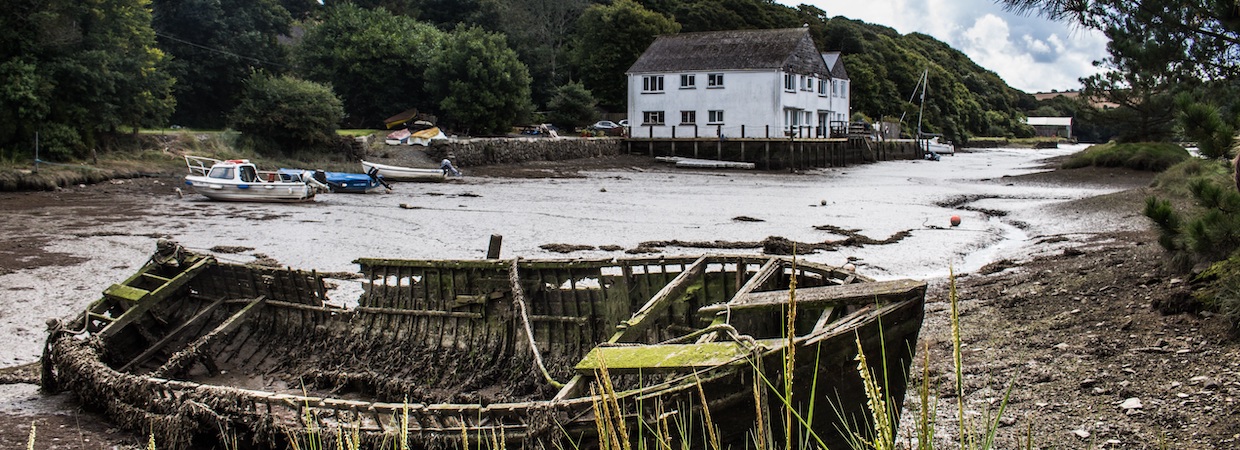Hi everyone, hope you are all doing well & safe!
Here's what happened on the twenty-third week of 2022.
📆 On Tuesday 7 June, we had a great informal discussion on the concept of Placement developed by Richard Buchanan in his paper Wicked Problems in Design Thinking, JSTOR Design Issues, Vol. 8, 1992. The discussion originally started on our Slack server (join us here), and we connected Placement with constraints and direction in complexity thinking:
Placement is “direction with no predetermined destination”. [Buchanan] describes design as a probabilistic approach, defined by the relationship between context and practitioners (the boundary), unlike a scientific approach which works by isolation of cause & effect.
📆 Jeudi 9 juin, nous avons discuté de la façon de concevoir dans des environnements spécialisés (domaines expert) tels que les cabinets d'avocats et de notaires, et comment apporter de la nouveauté et échapper au paradigme(s) dominant(s) en cartographiant le paysage actuel, en recherchant des patterns dans d'autres domaines et en trouvant des moyens de les transposer & recombiner pour changer les interactions dans le système.
Shared by the community
Here's what community members shared & discussed on our Slack server these past few days, sorted by channel.
#Links

#Topic Critical Thinking
Shared by @Vinish:
Perspective—10 Iceberg Situations: Sonder more to be less cranky

#Topic Design
Shared by @(Kevin)SkepticalDesign:
A response to McKinsey’s report “Redesigning the design department” by GK VanPatter from humantific.

Interesting articles that bridges design and complexity theory, by Kasey Klimes


#Topic Ethics
Shared by @Vinish:
Joint investigation into location tracking by the Tim Hortons App: https://priv.gc.ca/en/opc-actions-and-decisions/investigations/investigations-into-businesses/2022/pipeda-2022-001/#toc3-1
The Tim Hortons app used location data to infer where users lived, worked, and whether they were travelling. It generated an “event” every time users entered and left their homes, entered and exited their office, or travelled. https://t.co/ZvPJnTx8CT pic.twitter.com/yx1q8dqQtH
— OPC (@PrivacyPrivee) June 1, 2022
#Topic Innovation-change
Shared by @(Kevin)SkepticalDesign:
7 principles of sense-making in strategy:
1. Focusing on describing the evolutionary potential of the here and now.
2. Mapping that space without making more assumptions than are necessary and with as much objectivity as possible.
3. Using new language for new concepts, avoiding language that carries too many assumptions.
4. Focusing change on multiple small projects, some of which contradict each other but which overall have coherence.
5. Getting to the right metaphor is important.
6. All voices need to be heard but not all voices should be tolerated.
7. Any approach to strategy needs to be dynamic and non-linear in nature.

Shared by @Jonathan:
Analternative to causal/goal directed thinking?
#Topic Org-teams-governance
Governance for Resilience: How Can States Prepare for the Next Crisis?
In contrast, a few governance “super-factors”—such as control of corruption, societal trust, and high quality political leadership—are exceptionally powerful in enabling a country to augment its resilience through multiple pathways.

Thanks for reading!
Kevin from Design & Critical Thinking.
Become a member, expand your thoughts, and engage in deep conversations about design, innovation, ethics, systems, change, etc. It's free, only brain juice is accepted! 👇



















Discussion